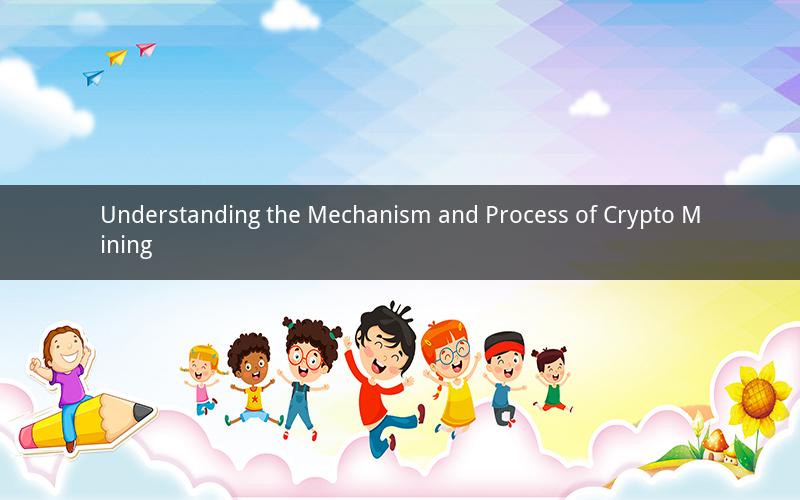
1. Introduction
Cryptocurrency mining has become a buzzword in recent years, captivating the attention of investors, tech enthusiasts, and casual observers alike. But what exactly is crypto mining, and how does it work? This article delves into the intricate world of crypto mining, exploring its purpose, process, and potential challenges.
2. What is Crypto Mining?
Crypto mining refers to the process of validating and adding new transactions to a blockchain. Miners use powerful computers to solve complex mathematical puzzles, and in return, they are rewarded with cryptocurrency. This process ensures the security and integrity of the blockchain network.
3. The Role of Blockchain
Before understanding crypto mining, it's essential to grasp the concept of blockchain. A blockchain is a decentralized, digital ledger that records transactions across multiple computers. It eliminates the need for a central authority, such as a bank, to verify transactions. Instead, the network of computers, or nodes, collectively validate and record transactions.
4. The Mining Process
The mining process involves several steps:
a. Receiving Transactions: Miners receive a list of pending transactions from the blockchain network.
b. Forming a Block: Miners gather these transactions and form a block. Each block contains a certain number of transactions, known as a block size limit.
c. Solving the Mathematical Puzzle: Miners must solve a complex mathematical puzzle to validate the block. This puzzle is designed to be computationally intensive, requiring significant processing power.
d. Reward: Once a miner solves the puzzle, they are rewarded with cryptocurrency. The reward amount varies depending on the cryptocurrency and the difficulty of the puzzle.
5. The Proof of Work (PoW) Algorithm
The Proof of Work (PoW) algorithm is the backbone of crypto mining. It ensures that the mining process is secure and fair. The PoW algorithm requires miners to find a specific number that satisfies a set of conditions. This number is known as the nonce.
6. Mining Hardware and Software
To mine cryptocurrency, miners require specialized hardware and software. The hardware, known as an ASIC (Application-Specific Integrated Circuit), is designed to perform the computational tasks required for mining. Mining software helps miners connect to the blockchain network, receive transactions, and communicate with other miners.
7. Mining Pools
Mining pools are groups of miners who collaborate to increase their chances of solving the mathematical puzzle. When a pool successfully mines a block, the rewards are distributed among the pool members based on their contribution.
8. The Challenges of Crypto Mining
Despite its potential rewards, crypto mining comes with several challenges:
a. High Energy Consumption: Mining requires a significant amount of electricity, which can lead to high energy bills and environmental concerns.
b. High Initial Investment: The cost of mining hardware and software can be substantial, deterring potential miners.
c. Market Volatility: The value of cryptocurrency can fluctuate significantly, affecting the profitability of mining operations.
9. The Future of Crypto Mining
The future of crypto mining remains uncertain. As more miners join the network, the difficulty of solving the mathematical puzzle increases, making it more challenging to mine profitable blocks. Additionally, some cryptocurrencies are exploring alternative consensus mechanisms, such as Proof of Stake (PoS), which may reduce the reliance on mining.
10. Conclusion
Crypto mining is a fascinating process that underpins the security and integrity of the blockchain network. While it presents challenges, the potential rewards continue to attract miners worldwide. Understanding the mechanics and process of crypto mining can help individuals make informed decisions about their involvement in this rapidly evolving industry.
Questions and Answers:
1. Q: What is the primary purpose of crypto mining?
A: The primary purpose of crypto mining is to validate and add new transactions to a blockchain, ensuring the security and integrity of the network.
2. Q: How does the Proof of Work (PoW) algorithm work?
A: The PoW algorithm requires miners to solve a complex mathematical puzzle to validate a block. This process ensures that the mining process is secure and fair, as it becomes increasingly difficult to solve the puzzle as more miners join the network.
3. Q: What is a mining pool, and how does it benefit miners?
A: A mining pool is a group of miners who collaborate to increase their chances of solving the mathematical puzzle. When a pool successfully mines a block, the rewards are distributed among the pool members based on their contribution, providing a more consistent income.
4. Q: Why is energy consumption a concern in crypto mining?
A: Energy consumption is a concern in crypto mining because it requires a significant amount of electricity to power the specialized hardware used for mining. This can lead to high energy bills and environmental concerns, especially in regions with limited renewable energy sources.
5. Q: What are the potential challenges of the future for crypto mining?
A: The potential challenges of the future for crypto mining include increasing difficulty levels, high initial investment costs, and market volatility. Additionally, some cryptocurrencies are exploring alternative consensus mechanisms, such as Proof of Stake (PoS), which may reduce the reliance on mining.